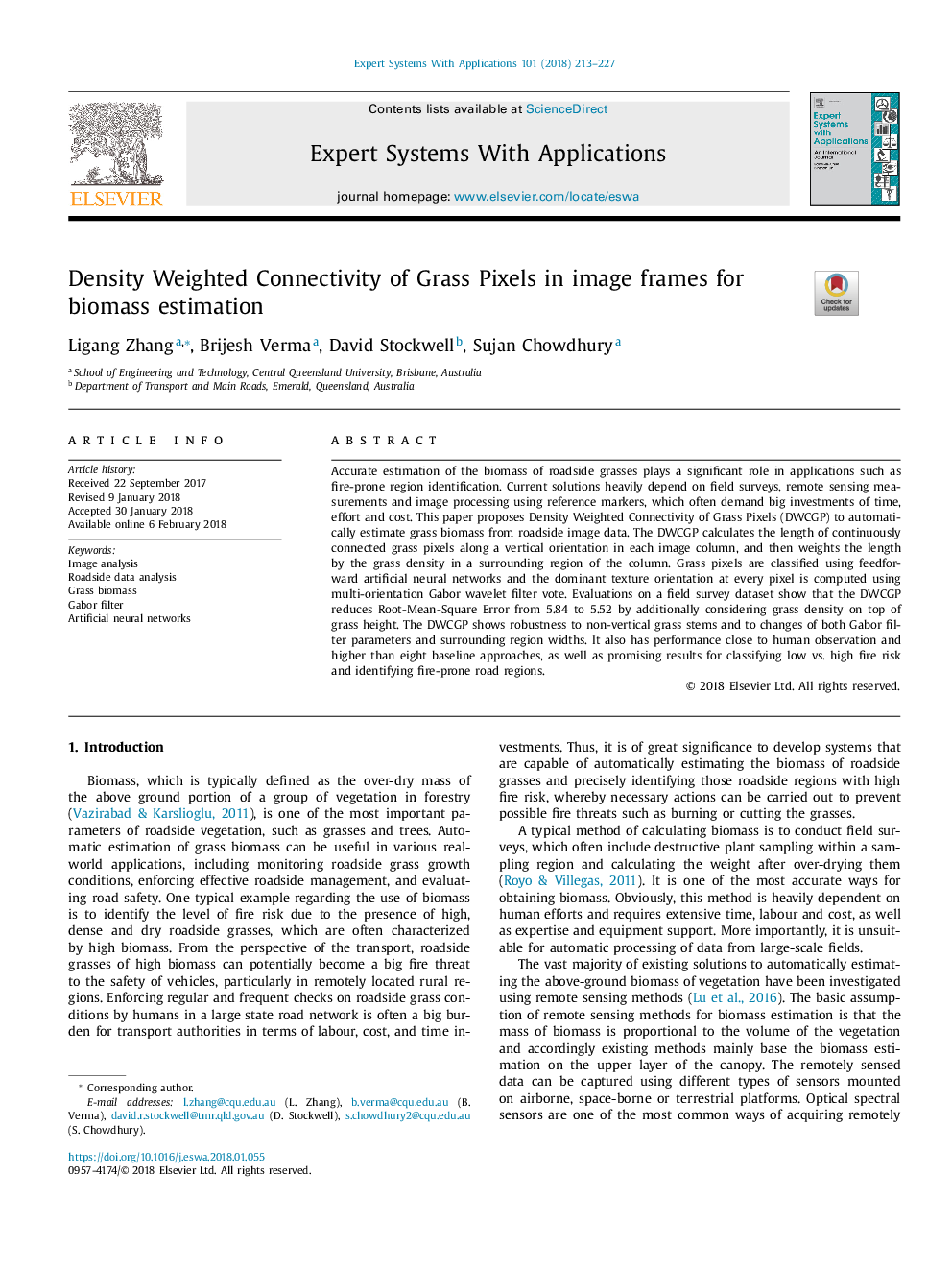| Article ID | Journal | Published Year | Pages | File Type |
|---|---|---|---|---|
| 6855090 | Expert Systems with Applications | 2018 | 15 Pages |
Abstract
Accurate estimation of the biomass of roadside grasses plays a significant role in applications such as fire-prone region identification. Current solutions heavily depend on field surveys, remote sensing measurements and image processing using reference markers, which often demand big investments of time, effort and cost. This paper proposes Density Weighted Connectivity of Grass Pixels (DWCGP) to automatically estimate grass biomass from roadside image data. The DWCGP calculates the length of continuously connected grass pixels along a vertical orientation in each image column, and then weights the length by the grass density in a surrounding region of the column. Grass pixels are classified using feedforward artificial neural networks and the dominant texture orientation at every pixel is computed using multi-orientation Gabor wavelet filter vote. Evaluations on a field survey dataset show that the DWCGP reduces Root-Mean-Square Error from 5.84 to 5.52 by additionally considering grass density on top of grass height. The DWCGP shows robustness to non-vertical grass stems and to changes of both Gabor filter parameters and surrounding region widths. It also has performance close to human observation and higher than eight baseline approaches, as well as promising results for classifying low vs. high fire risk and identifying fire-prone road regions.
Related Topics
Physical Sciences and Engineering
Computer Science
Artificial Intelligence
Authors
Ligang Zhang, Brijesh Verma, David Stockwell, Sujan Chowdhury,
